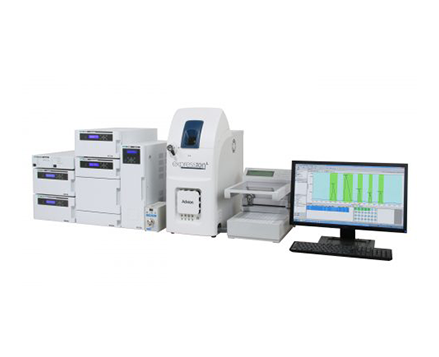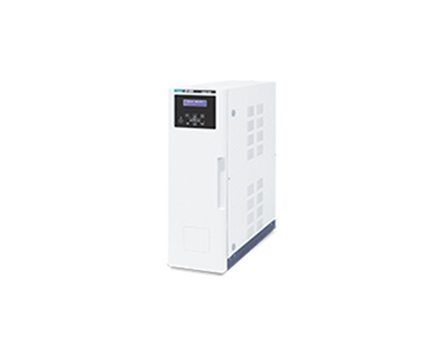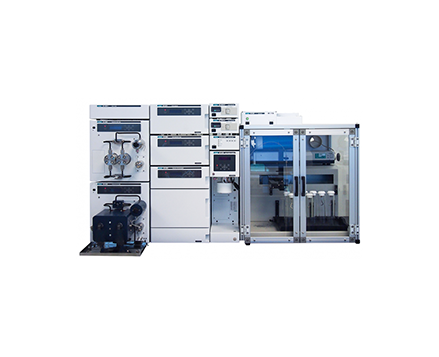Ultra High-Speed Analysis of Free Fatty Acids in Vegetable Oil using ADAM Derivatization by Ultra High-performance Liquid Chromatography
January 5, 2024
Introduction
In fatty acid analysis, UV detection at a short wavelength, refractive index detection and evaporative light scattering detection (ELSD) are generally employed. However, in trace analysis, a derivatization method is preferred because it offers much higher sensitivity. There are several derivatization methods for the detection of free fatty acids that require either UV or fluorescence detection. Among them, 9-Anthryldiazomethane (ADAM) is most commonly used because it reacts with fatty acids easily at room temperature and enables a highly sensitive and selective analysis.
Here, the separation and fluorescence detection of free fatty acids in vegetable oil is demonstrated using ADAM derivatization by Ultra High-performance Liquid Chromatography (UHPLC)
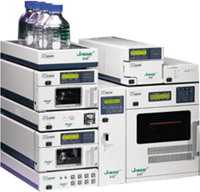
Experimental
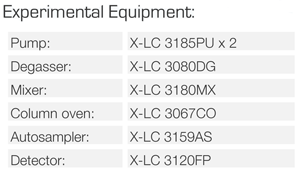
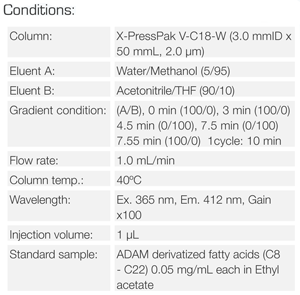
Keywords
220056X
Results
Figure 1 shows the procedure for ADAM derivatization and figure 2 shows a reaction mechanism of ADAM reagent.


Figure 3 shows the chromatogram of the standard mixture of fatty acids derivatized with ADAM. 11 different fatty acids were separated within 7 minutes.
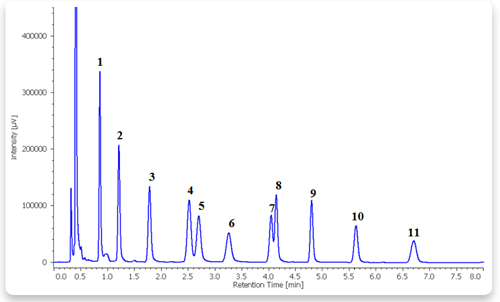
Figures 4 and 5 show the chromatograms of fatty acids in rice oil and coconut oil derivatized with ADAM, respectively.

Preparation. Dissolve 1.0 g of rice oil in 10 mL of ethyl acetate and then follow the procedure for ADAM derivatization as in figure 1.

Preparation : Dissolve 1.0g of coconut oil in 10mL of ethyl acetate and then follow the procedure of ADAM derivatization as in figure 1.

Featured Products:

Ultra High-Speed Analysis of Free Fatty Acids in Vegetable Oil using ADAM Derivatization by Ultra High-performance Liquid Chromatography
Introduction
In fatty acid analysis, UV detection at a short wavelength, refractive index detection and evaporative light scattering detection (ELSD) are generally employed. However, in trace analysis, a derivatization method is preferred because it offers much higher sensitivity. There are several derivatization methods for the detection of free fatty acids that require either UV or fluorescence detection. Among them, 9-Anthryldiazomethane (ADAM) is most commonly used because it reacts with fatty acids easily at room temperature and enables a highly sensitive and selective analysis.
Here, the separation and fluorescence detection of free fatty acids in vegetable oil is demonstrated using ADAM derivatization by Ultra High-performance Liquid Chromatography (UHPLC)

Experimental


Results
Figure 1 shows the procedure for ADAM derivatization and figure 2 shows a reaction mechanism of ADAM reagent.


Figure 3 shows the chromatogram of the standard mixture of fatty acids derivatized with ADAM. 11 different fatty acids were separated within 7 minutes.

Figures 4 and 5 show the chromatograms of fatty acids in rice oil and coconut oil derivatized with ADAM, respectively.

Preparation. Dissolve 1.0 g of rice oil in 10 mL of ethyl acetate and then follow the procedure for ADAM derivatization as in figure 1.

Preparation : Dissolve 1.0g of coconut oil in 10mL of ethyl acetate and then follow the procedure of ADAM derivatization as in figure 1.

Keywords
220056X

 Download This Application
Download This Application